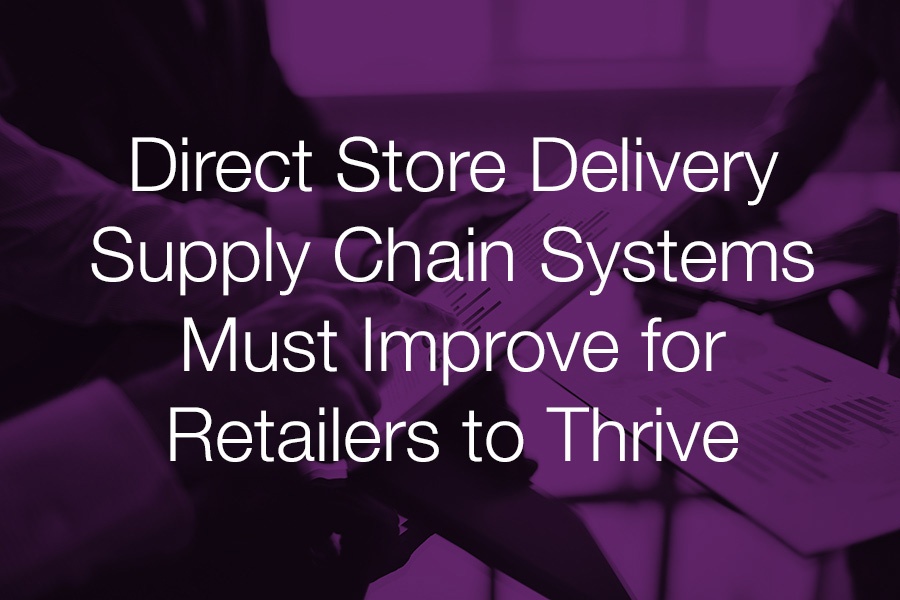Direct store delivery has a deep-rooted history in retail. DSD really started taking shape and being widely used in the 1990’s. The idea that the Suppliers would be providing a service where they would take on the tasks associated with in-Store inventory forecasting, ordering, Merchandising, shelf management, pricing and promotions on the products they provided was very attractive. Retailers were more than happy to relinquish these activities to the suppliers, as they no longer had to manage these tedious processes while also reducing labor and the need to carry excessive inventory for those product. What a great model.

As we all know, the retail world has gone through significant changes over the last decade with the technological advancements in the market place. Buy as the rate of change in the traditional, central warehouse supply chain has continued to move forward the DSD supply chain has stayed stagnant, which, over time, has become a significant obstacle for retailers. In a 2008 a study from the Grocery Manufacturer’s Association put out a report stating that although only 24 percent of in store merchandise were DSD, this same 24 percent delivered 52 Percent of the profits. These were major findings considering the DSD supply chain model has not evolved like the traditional supply chain has. 52 Percent of the retail profits was and still is very significant.
Imagine what’s possible with better DSD Supply Chain systems.
It is not difficult to get one’s arms around what the DSD supply chain model is lacking. Just look at the state of the art traditional supply chains of today. The tools retailers use to manage their central warehouse operations, inventory management and forecasting just to name a few, have improved leaps and bounds. Retailers have the ability to better manage inventory levels at store level, so they can minimize being over stocked on items and out of stock on others through predictive ordering. Retailers can also manage supplier performance such as fill rate and order accuracy with near-real-time visibility throughout the entire central warehouse supply chain. Retailers can also manage sales performance through enhanced analytics, managing the distribution of promotional quantities to stores by leveraging historical sales and inventory performance data etc.
Not so with DSD.
As the DSD supply chain model switched much of the executional levers and oversight from retailer to supplier, retailers also relinquished the ability to very closely manage that part of the business. With little to no visibility into the DSD supply chain, retailers in many cases are blind to how productive their DSD inventory is; how much inventory is being ordered for their stores by the supplier; whether the right inventory is ordered based on demographics and or sales history; how effective promotional activity is; how prevalent over stock or out of stock instances are. In some cases, retailers have no ability to validate that they even received the right items at the right prices, which make reconciling supplier invoices very manual, extremely tedious and expensive.
When comparing the enhanced supply chain of the central warehouse to today’s DSD supply chain, the differences are alarming. If you factor in the need for retailers to have an Omni Channel presence in order to compete in a the new world of consumer choice, changes to the DSD supply chain are not a good to have, they are a must have.
Consumers expect to shop when and where they want, at a reasonable price. Many consumers, especially younger ones, increasingly want purchases delivered. They want their central-warehouse items such as diapers, but they also want DSD items such as salty snacks, soda and candy. And conditioned by Amazon to expect perfection, they expect the order to be 100% right practically 100% of the time.
With DSD, delivering on these expectations is practically impossible today for most retailers. In fact, some major national retailers are not even offering DSD items for online sales, because those retailers recognize that they do not have a clear and accurate picture of their DSD inventory levels.
Retailers are at a crossroad. How can retailers continue to compete in this new landscape when there are clearly opportunities with the 24 percent of their goods that drive 52 Percent of their profits?
One thing is absolutely clear. In order to compete in today’s and future retail environments, retailers will need the ability to manage and optimize DSD in a more meaningful way. Because the DSD business model in general will remain fragmented and complex, in large part due to the sheer number of suppliers and the wide range of unique technology platforms they use, retailers will need to leverage technology to bend the curve.
Some retailers may choose to try and build a DSD supply chain system internally. It is hard to see how such a decision would represent a wise choice. Even assuming they are successful in building a system that works, time to build would be considerable, integrating with hundreds of supplier systems would be arduous and cost prohibitive. Moreover, the risk of failure on projects of this nature according to some studies is upwards of 50%.
Smarter retailers are looking for a third-party provider who can bring all of the complex inner workings of the DSD supply chain into one easy to use system that mirrors todays traditional supply chain features and functionalities. These retailers want to be able to transform how they manage DSD and keep or grow the 52 percent of the profit DSD represents, not cede it to Amazon or other massive competitors. And they recognize they are in the retail business, not software development business.
